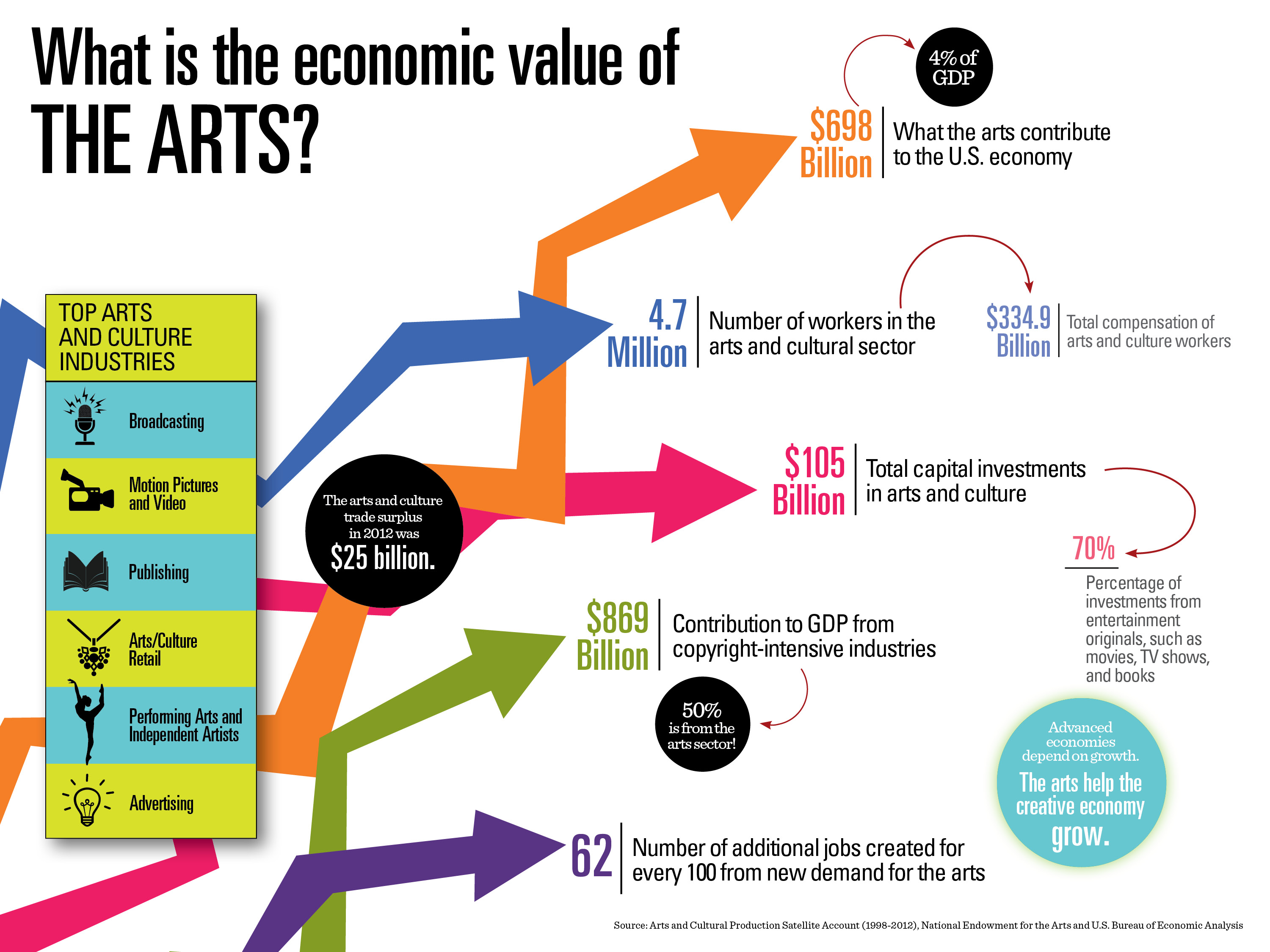
15 Jan NEA Report Shows Stronger Contribution of the Arts to the US Economy than Previously Assumed
A report issued in mid-January by the National Endowment for the Arts (NEA) concludes that the arts make a substantial contribution to the US economy – 4% of the GDP (gross domestic product), or $698 billion. The report, A Decade of Arts Engagement: Findings From the Survey of Public Participation in the Arts, 2002–2012, summarized the first in-depth study by the federal government of the impact of the arts and cultural sector to the GDP. The study was conducted over ten years in partnership with the Arts and Cultural Production and Satellite Account (ACPSA). The results indicate that the arts are a bigger driver of the US economy than previously assumed.
Among the surprising findings are:
- In 2012, the arts contributed more to the US economy than construction or transportation and warehousing.
- The arts employed 4.7 million workers, who were compensated approximately $334.9 billion.
- For every 100 new jobs created by the demand for the arts, an additional 62 jobs were created.
- Of the $869 billion contributed to the GDP from copyright-intensive industries, 50% is from the arts sector.
The report was released by the NEA in conjunction with two other reports. The first report, When Going Gets Tough: Barriers and Motivations Affecting Arts Attendance, investigated why people attend arts events such as dance, theater, music, and visual arts, and what factors prohibited them. The findings showed that more Americans attend live arts events (51%) than exercise regularly (46%), and that socializing, learning new things, and supporting their community were the top motivators. The study also showed that life stages (pursuing higher education, marriage, family raising, retirement), rather than age alone, predicted arts attendance significantly. For example, families with children under six cited lack of time as the top reason why they couldn’t attend arts events. Other barriers included difficulty in accessing a location, which significantly impacts older adults and people with disabilities, resulting in a loss of up to 11 million attendees.
The second report, A Decade of Arts Engagement: Findings from the Survey of Public Participation in the Arts, 2002–2012, studied why and how Americans engage in the arts. Over 37,000 individuals were surveyed. The results showed that exposure to the arts in childhood was a stronger predictor of whether an adult engaged in the arts than age, gender, education level, or income; a person who visited museums or attended live performances as a child is 3-4 times more likely to engage in the arts than a person who didn’t. The results also showed that 54% of Americans – 120 million – attended at least one live arts event in the past year. Not surprisingly, technology facilitates participation in the arts: 71% used electronic media to watch or listen to the arts, and many used digital media in the creation of their own artworks. While women outstripped men in arts participation in general, men were more likely than women overall to use electronic media to create or perform music, or to create visual works online.
The NEA has made the data for the results available to researchers, policy makers, and artists through a new online platform that was launched on January 12th. The platform, the National Archive of Data on Arts & Culture (NADAC), provides free access to both the data and resources and promises a “a user-friendly platform for querying the data.” The report and supporting documents can be downloaded from the NEA’s publications page.
Infographic @ National Endowment for the Arts
